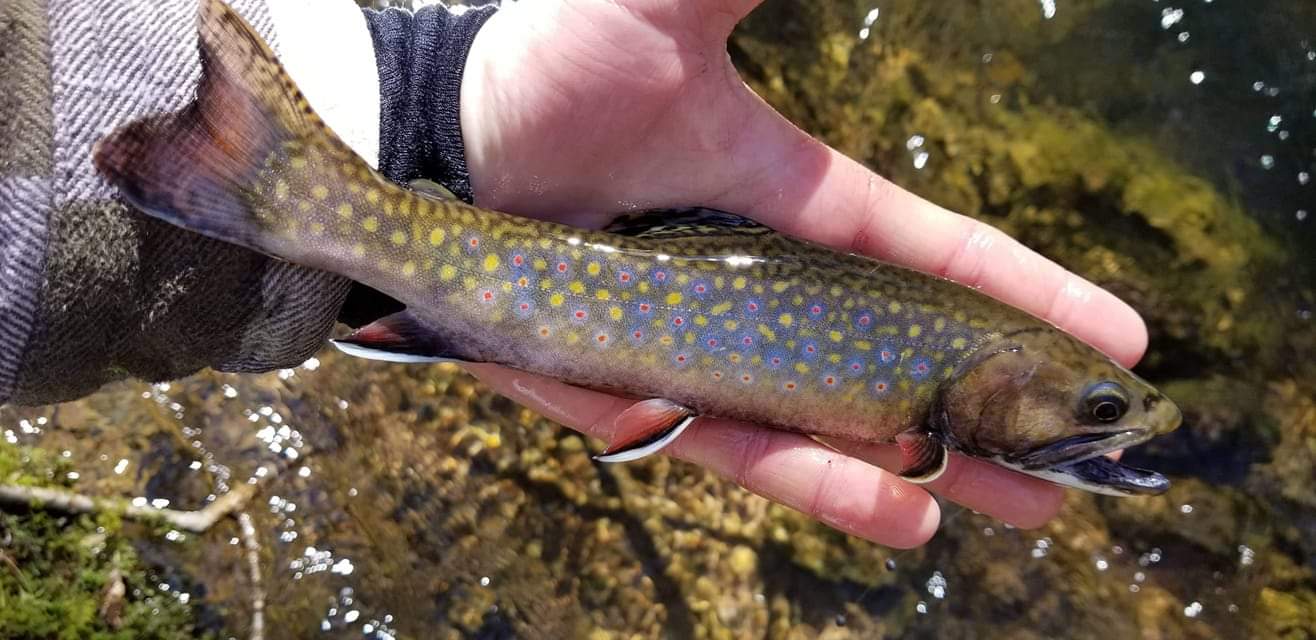“The big show starts around 7 p.m. in front of the cabin. From that time until it is too dark to fish, the stream will boil trout. If you are lucky to match one of three to five hatches going on, you will be rewarded with epic fishing. Sometimes everything comes together and the fish stay on one bug and the result is magical. Other times the fish will feed on one bug for 10 minutes switch to another and the race is one to match the hatch before it switches or gets too dark to see your fly in the water.”
I love fly fishing. But when I got Richard’s note, I panicked. The chance to fish my friend, and former TU board member, Richard Johnson’s place on the fabled Penns Creek in Pennsylvania was not to be missed. I checked a few websites to calibrate my expectations. “Green drakes should be hot. Ephemera guttulata should be abundant. Keep an eye out for Ephemerella invaria and Isonychia bicolor, too. Look for Epeorus vitreous, too!”
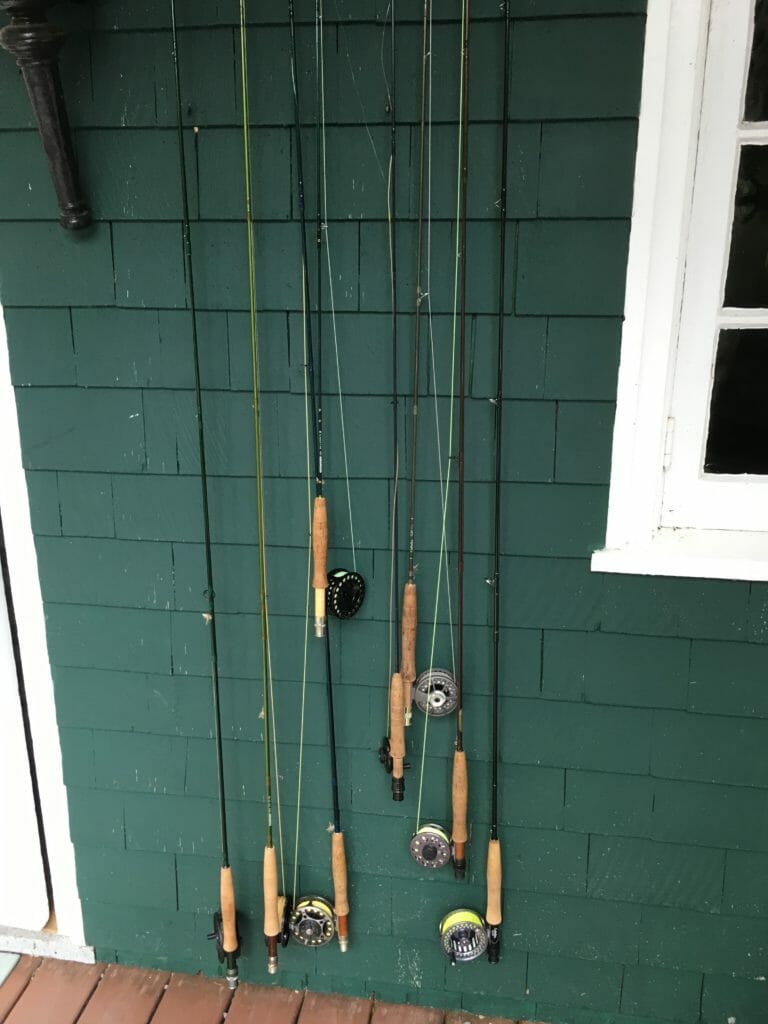
Say what? I likely have all those flies, but thinking of the pressure of matching the mess in my box to what’s happening in the gloaming of the day seemed hopeless. I could imagine Richard or one of his friends calling over with the Latin name of a specific mayfly, and me sagely nodding while thinking, “What the heck is that?” I was reminded of a recurring nightmare where my quarterback breaks a huddle calling a pass to me, and I head to the line completely ignorant of my pattern.
I am an exceptionally earnest, but very average angler. I came to TU for the conservation, but obviously appreciate the fishing. So, I made the drive to his cabin in the catch-and-release section of the river. About 30 miles from the cabin, right before cell coverage ran out, I crossed Penns Creek, and called my assistant, Liz.
“We won’t be fishing Penns Creek,” I said.
The river was big, and brown. Unfishable.
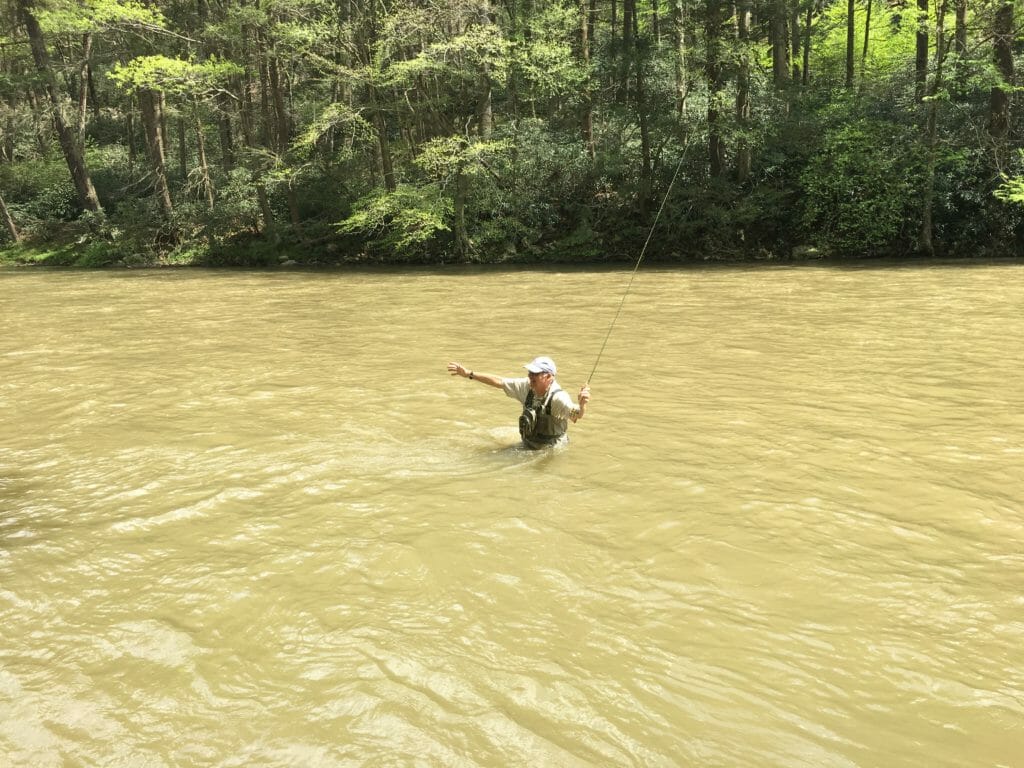
Richard met me in the driveway before I parked the car.
“How long until you can be ready to fish?”
Ten minutes later we were bopping up the road in his truck. “We’re going to fish Unnamed Creek,” he said. Unnamed Creek is a small tributary to Penns with very wild, and very wary native brookies in it. Shad bush or serviceberry—so named because they appear when the shad are in the river and in the old days, when the ground was soft enough to bury the winter’s dead—were in bloom.
We took turns crawling into casting positions, and tossing small dry flies into the likeliest pools. Richard is a former college football player—a lineman no less—but he crept along the creek a lot more nimbly than I. The flows were twice as high as normal because of all of the rain, but the woods surrounding the creek had few roads and little development, so the water remained clear. Part of the reason Penns Creek is such a great fishery is because of the health of small headwater streams that flow into it, such as this one.
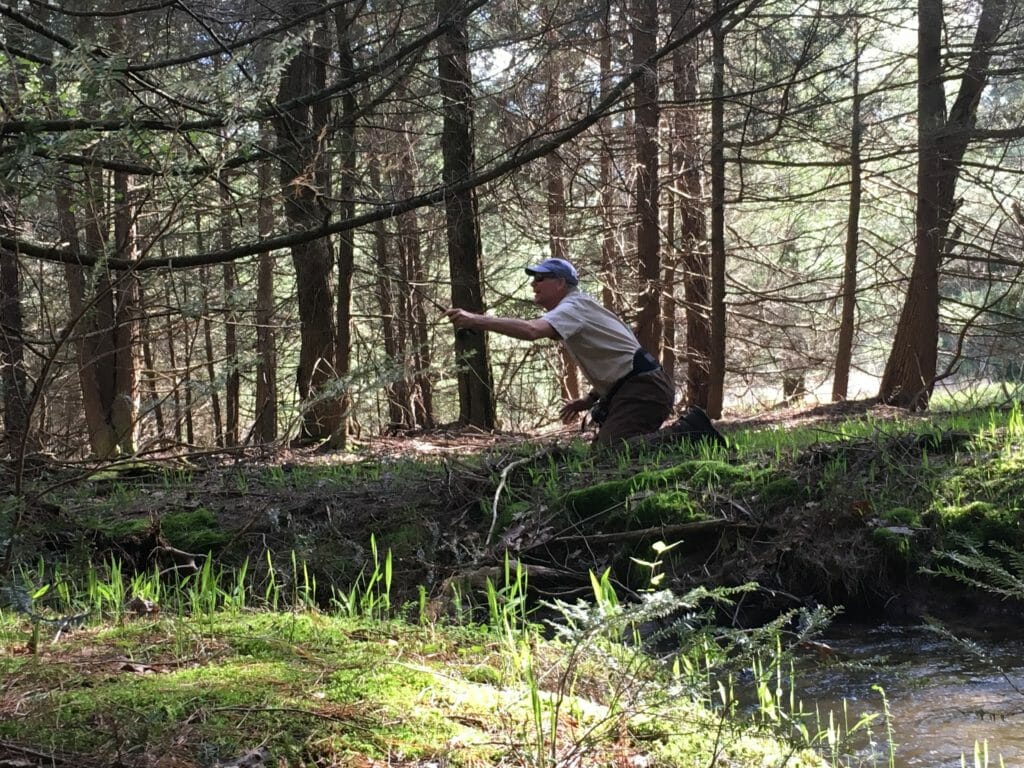
I released a four inch native brook trout that took my fly. And, I thought about the countless other small streams that Trout Unlimited has helped to protect and restore on the Connecticut, the Potomac, the Wyoming Range, the Sierra —the list goes on.
When it comes to restoring rivers, it is generally better to start in the higher elevation headwaters with the smallest traces, rills, runs and creeks, and work your way down to the larger streams and rivers. Gravity will eventually do its thing and the clean water up high will find its way downstream and help to grow big fish in larger rivers such as Penns Creek. This helps explain why TU is so fixated on ensuring that small streams receive protection under the Clean Water Act, and why, if you fish, you should be, too.
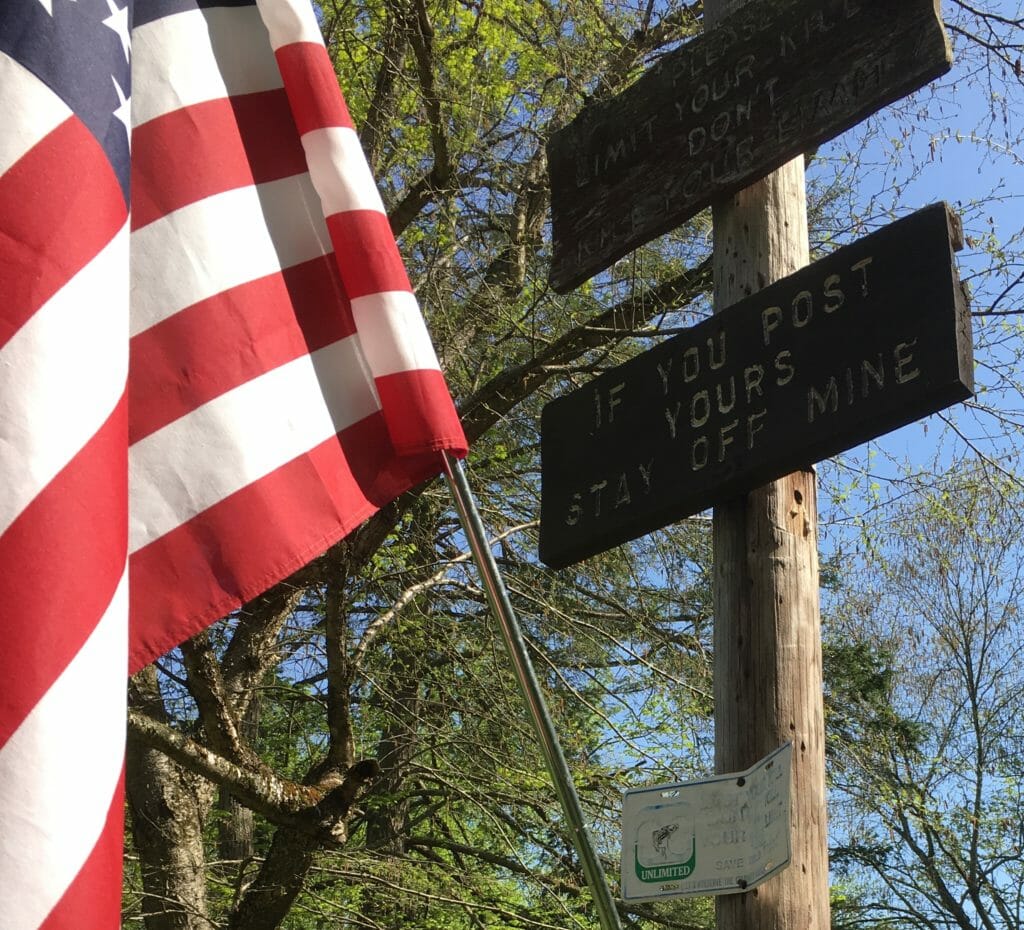
I stopped off at a TU business member, Penns Creek Angler. Bruce, the owner, hooked me up with a few flies. He also mentioned a few other small streams that should hold brook trout and fish well despite the rain.
When confronted with a luxury such as the awesome wild brown trout of Penns Creek, it is easy to forget about the small streams that make it so exceptional—until it rains for three days straight, and you have the chance to fish them.
Chris Wood is the president and CEO of Trout Unlimited. He works from TU’s Arlington, Va., headquarters.



